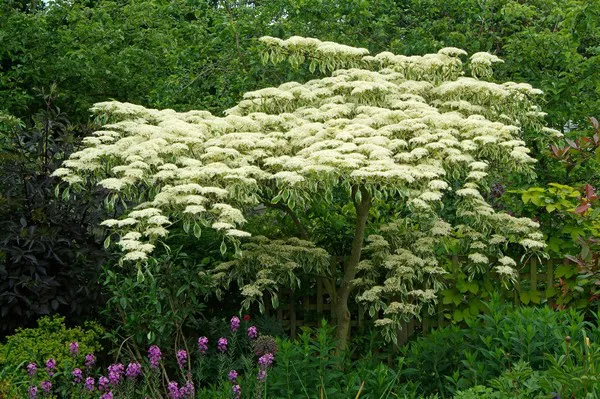A plea has been issued to residents across France to cultivate native flowers in their gardens as part of an effort to protect the country’s biodiversity. This call comes in response to a recent study that highlighted the endangered status of several native plant species.
Published in the prestigious Scientific Reports journal, the study reveals that the cultivation of native flora and plants, as opposed to exotic species, could substantially reduce the overall threat level to Germany’s native flora by a notable 25%. Researchers suggest that similar practices could have a positive impact on biodiversity in France and other nations.
This innovative approach has been termed “conservation gardening.” While the study does not provide exact figures on the extent of conservation gardening required to halt plant biodiversity loss, researchers emphasize the significant role individuals can play, particularly as only a small portion of land is public. This method promises to enhance overall garden biodiversity.
Sébastien Filoche, Deputy Scientific Director of the Conservatoire Botanique National du Bassin Parisien, commented on the necessity of safeguarding habitats alongside individual plant protection. He highlighted practices like avoiding excessive concrete use in green spaces and reducing lawn mowing frequency as key measures to enable local flora to thrive.
Bruno Cornier, a botanist unaffiliated with the study, lauded the focus on vulnerable plants, emphasizing its potential to bolster endangered species and their genetic diversity. He noted the benefit of creating an environmental continuum for migration and reducing the risk of invasive species spreading. However, he underscored that protecting habitats must remain the top priority.
France boasts around 5,000 indigenous species of fauna, but a concerning 700 are considered endangered according to the IUCN Red List of Threatened Species. These threats stem from factors such as agricultural practices, pesticide use, evolving farming techniques, competition from non-native species, and overharvesting.
The study offers solutions by suggesting native species suitable for cultivation in green spaces, private gardens, and even balcony pots. Native plants were found to be more drought-tolerant and less reliant on fertilizers or plant feed for their survival.
The study’s authors have developed an app to help users identify the best species for planting in their region, primarily focused on Germany but with relevance to France.
However, some skepticism remains regarding the public’s willingness to embrace native species. Thomas Haevermans from the Muséum national d’Histoire naturelle acknowledged the concept’s merit but noted that local plants are often perceived as weeds, despite their aesthetic appeal.
Nonetheless, some French gardeners are embracing this approach, particularly in Centre-Val-de-Loire, where approximately 60 native tree and shrub species have been highlighted as regionally suitable. Pascale Larmande, an ecologist at the Agence Régionale de la Biodiversité, emphasized that these plants are well-suited to the local soil and climate, fulfilling the needs of small wildlife and pollinators.
In Centre-Val-de-Loire, residents and local authorities can now access a regional guide to help select suitable varieties for planting. The guide includes rare fruits and vegetables, excluding protected species due to stringent cultivation regulations. Additionally, the guide provides tips for pesticide-free gardening and attracting beneficial insects and animals to promote biodiversity.
This initiative follows President Macron’s commitment in 2021 to allocate €50 million to grow 7,000 kilometers of hedges in the countryside by 2022, aimed at bolstering biodiversity throughout France.


